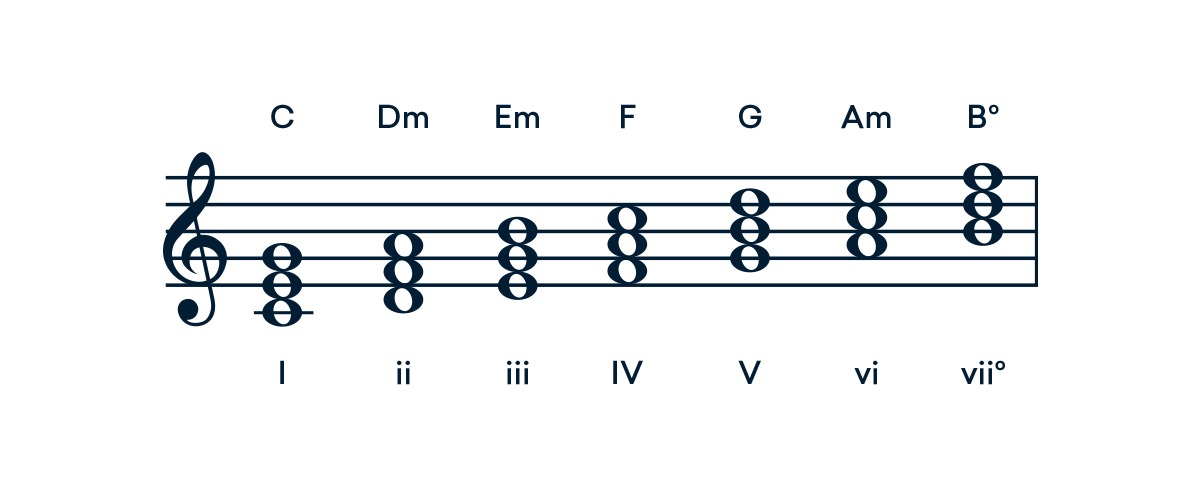Triads are one of the most basic knowledge in music theory.
They’re the simplest type of musical chord, but they’re an essential pattern that’s discovered throughout a number of structures in music.
However even if you have a basic understanding of what triads are, it’s worth looking into them in detail.
In this article, I’ll clarify triads clearly, show why it’s helpful to learn them and provide you with ideas to work with them in your music.
Let’s get started.
What are triads in music?
A triad is a three-note musical chord consisting of the basic note with two additional notes—each a third away from the last.
In relation to the basis, a triad contains a third and a fifth interval. The connection between the root and the other musical intervals determines the chord quality of the triad.
The four triad qualities are
- Major triad (1 3 5)
- Minor triad (1 b3 5)
- Diminished triad (1 b3 b5)
- Augmented triad (1 3, #5)
A triad is a three note musical chord consisting of the basis note with two additional notes—each a third away from the last.
Why are triads essential?
Triads are the building blocks of chords. They’re the simplest type of harmonic structure in music.
You may write an entire song utilizing just these three-note chords—and lots of songwriters do!
However, you don’t have to use triadic chords immediately to benefit from learning them. Triads allow you to understand the harmonic function of notes on a scale.
Take the triad built on scale degree 5 of the major scale for instance. It contains scale degrees 5, 7, 2.
If you listen with the scale’s tonic in mind, it’s simple to hear the tension pulling it back toward the tonic chord with scale degree 7 resolving up to 1.
Take each scale degree and build a chord utilizing only the notes available within the key signature. These are the diatonic triads.
Associating scale degrees with chords and their harmonic function is one of the greatest methods to grow your music theory knowledge and feel at home on your instrument.
Chord inversions
Triads can appear with their notes in several orders. These different note arrangements are known as inversions.
Inversions change the feel of the chord without changing the quality or the function of the harmonic. In addition, they open up different possibilities for arrangement and voice leading.
The simplest kind is known as the root position. This is the familiar snowman shape with each new note stacked immediately on top by thirds.
However, there are two different possible positions called first inversion and second inversion.
The first inversion includes a third of the chord in the lowest voice with the fifth and tonic above
How to use triads in your music
The easiest way to start with triads is to learn the diatonic triads—the set of three-note chords that can be built from each degree of the scale.
Take each scale degree and build a chord utilizing only the notes available within the key signature.
For instance, in the key of C major, here are the diatonic triads for each scale degree.
Understanding them well will allow you to create unique chord voicings when building seventh chords and extended chords by stacking triads on top of each other.
You’ll be able to even create interesting polychords by mixing and matching.
Triadic motion is a helpful technique to make use of while improvising.
On top of that, triadic motion is an extremely useful technique to use while improvising. If stepwise motion up and down the scale starts to get dull, experiment with moving by triads to spice things up.
Considering this way will allow you to create melodies that outline the harmony as you start to see the patterns created by triads.
Harmonic structures
Triads are a beginner concept in music theory. However, they’re so essential that you’ll never stop working with them as you develop your abilities.
Whether you’re working with chords, scales, or harmonic progressions, understanding your triads will unlock creativity in songwriting, producing, and more.
Now that you have triad basic knowledge, get back to your workflow and keep creating music.


